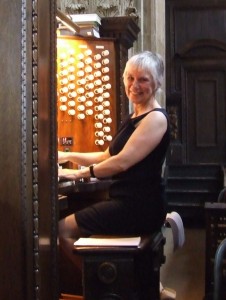WHAT FIRES A MUSICAL RESPONSE?
One recent evening, I attended a concert of chamber music, which included music by Franck and Vierne. We are used to thinking of Franck as a composer of both organ music and orchestral works, and Vierne mostly as a master of the organ symphony and of short organ pieces. Works for violin and piano by these two were unknown to me and showed a different aspect of the composers’ language to familiar organ music. The performers were top notch in every respect. Every twist and turn within complex and lengthy musical developments were beautifully articulated, clearly shaped, delivered with power, panache and sensitivity; everything was easy to follow provided that one had not nodded off in a warm, comfortable environment. Despite admiring such excellent and inspiring performance, I remained unmoved whereas Norman was excited and completely at one with it all.
Such thoughts of why some music moves one and not the other when they speak the same language, play the same instrument and do the same sort of job is something that has been pondered for some time. We have studied the why and the how of music over many years and noted changes in fashion and style. We understand and discern the workings of composers’ minds. Why the same music appeals more to one than another is still a mystery that perhaps only the heart can answer.
Thinking back to my 1950’s childhood, hearing a wide variety of musical styles and instruments on the BBC Home Service certainly prepared the musical ear for hearing more amazing sounds later in life. As a very small child I remember being captivated by Swedish Rhapsody by Mantovani. It featured a solo accordion accompanied by Mantovani’s string orchestra. The rhythm, a lilting 2/4 time, a bit like a polka, combined with the repeated melodic line, based on a basic C major arpeggio, was music to my ears. It was unforgettable. Our 78 rpm shellac disc of this music eventually broke, and when fashions changed, it was never heard on the radio again. About 8 or 9 years after hearing it, the local vicar, who knew I was learning the piano, introduced me to a harmonium, and on the same day, to the Hill organ in Westhoughton Parish Church. That day changed one’s life forever. The sound of the accordion had made its mark and the organ took its place as the instrument of choice.
In studying music more formally both at school and college, a much wider range of music was introduced and I was deeply moved by the piano sonatas, piano concertos and symphonies of Beethoven, Mozart and Schubert. Later, discovering the music of Ravel, the sound world produced by his exquisite orchestrations had the same effect. In addition, I still love the songs of Motown, the Beatles, Beachboys and Dusty Springfield, and occasionally play the odd track to remind one of heady days. The 2017 performance at the Proms of Oklahama, broadcast again during Christmas, brought back powerful memories of my father who loved all musicals of Rogers and Hammerstein.
Trying to analyse such personal musical responses of the human may be counterproductive, but one can sense that particular sounds of both voices and instruments and exciting rhythms speak at a deeper level to the heart. What reaches one is meaningless to another. Beautiful, calming sounds of Tibetan bowls are used by music therapists to soothe some people. Gong baths feature in the healing practices of some alternative therapists. Why is our hearing range not as acute as those of dogs? Astronomers and cosmologists explore the universe and computer programmes translate their discoveries into strange sounds. We try to communicate with whoever is out there. Noting the ever popular Doctor Who, now featuring the first Woman Doctor, it is interesting to note that Ron Grainer’s theme tune was transformed from its original into its famous form by Delia Derbyshire, a highly gifted woman composer working in the BBC Radiophonic Workshop. New sounds were for a new musical age and many people now regard that as the norm, they hardly know the sound of anything else. The whole musical world has been electrified! Suffice to say that whatever an individual’s taste in music and sound, what remains is that we as organists present all our offerings to congregations and audiences to the very best of our ability. It does a lot of good to be inspired by sounds other than those of organs, solo singers and choirs. May the rest of 2018 resonate with plenty of good vibrations.
Marilyn Harper


